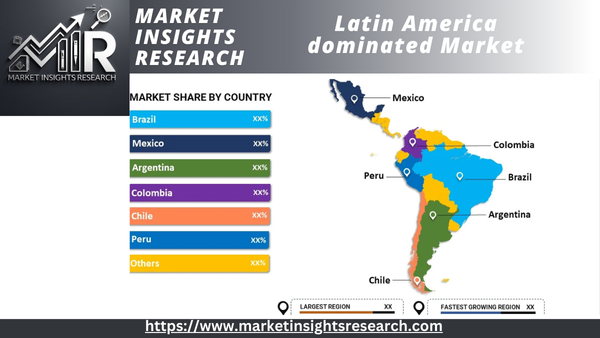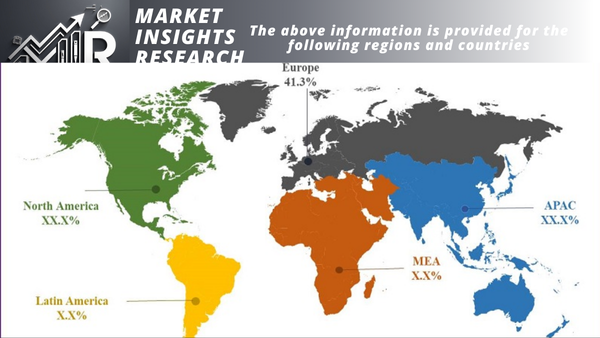Genetically Modified Feed Market
Genetically Modified Feed Market - By Type (Crop, Fruits & Vegetables), By Form (Pellets, Crumble, Mash, Meal/cake), By Feed Type(Roughages and Concentrates), By End use (Poultry, Swine, Cattle, Aquaculture, Pet Foods, Equine) & Global Forecast, 2022- 2030
Published Date: May - 2025 | Publisher: MIR | No of Pages: 240 | Industry: Animal Health and Nutrition | Format: Report available in PDF / Excel Format
View Details Buy Now 2890 Download Free Sample Ask for Discount Request CustomizationGenetically Modified Feed Market Size
Genetically Modified Feed Market size registered over USD 85 billion in 2021. Propelled by the expansion of the animal feed sector, the industry is expected to grow at a CAGR of over 5.5% between 2022 and 2030.
To get key market trends
Mostly offered to cattle and animals to make them healthy and nouraging, genetically modified feeds are rich in nutrients and quality. Market expansion will be facilitated by a recent increase in consumer inclination for meat products. Governments all over monitor GMO feed closely in order to keep the quality of the manufacturing and integration of the product. For instance, the Center for Veterinary Medicine has been assigned management of the U.S. Food and Drug Administration, the main regulatory body in charge of ensuring the safety of GMO and non-GMO food for animals in the nation.
| Report Attribute | Details |
|---|---|
| Base Year | 2021 |
| Genetically Modified Feed Market Size in 2021 | USD 85 Billion |
| Forecast Period | 2022 to 2030 |
| Forecast Period 2022 to 2030 CAGR | 5.5% |
| 2030 Value Projection | USD 135 Billion |
| Historical Data for | 2018 to 2021 |
| No. of Pages | 400 |
| Tables, Charts & Figures | 395 |
| Segments covered | Source, Form, Feed type, Application |
| Growth Drivers |
|
| Pitfalls & Challenges |
|
What are the growth opportunities in this market?
AquAdvantage Salmon and GalSafe pig have lately been cleared by the FDA for public distribution. Then, the growing availability of safe products is enabling developments in the market for genetically engineered food. Growing food demand in both wealthy and undeveloped nations will also drive sector growth. Companies are indulging in strategic alliances and acquisitions to bring fresh product lines and increase their commercial profile in different countries.
Government regulations may restrain industry progression
One main reason stopping market expansion is strict government rules emphasizing the penetration of non-GMO crops in food processing. The industry often faces opposition on growing the company outside of local markets as government authorities are closely observing the manufacturing process and regulating the supply and penetration of these products. Still, growing demand for GMO crop-based feed because of its low cost will force producers to concentrate on developing new crop feeds.

Genetically Modified Feed Market Analysis
Learn more about the key segments shaping this market
Regarding sources, the market for genetically modified feeds is split between fruits and vegetables (papaya, potatoes, eggplant) and crops (corn, soybean, canola, cottonseed, alfalfa). Valued at more than USD 80 billion in 2021, the crops segment is expected to generate over USD 130 billion by 2030. Key drivers of the global market growth are farmers' cultivation and acceptance of genetically modified crops, particularly in North America. Low pesticide and crop protection agent prices also help farmers to choose GMO crops, therefore supporting GMO feed distribution. This helps to preserve these crops during farming.
Learn more about the key segments shaping this market
Formally, the market for genetically modified feed is divided into pellets, crumbs, mash, and meal or cake. By 2030, the market for GMO feed from the pellets category is projected to exceed 150 million tons. The pellets form segment worldwide is driven by the rising output of pellets resulting from the always rising demand in poultry applications.
Looking for region specific data?
Based on feed type, the industry is classified into roughages and concentrates. The GMO feed market from the concentrates segment was valued at over USD 45 billion in 2021 and is forecast to exceed USD 70 billion by 2030. Concentrates provide nutrients that forage cannot and are a highly economical source of nutrients compared to any other type of feed. This benefit of concentrates encourages manufacturers to adopt this feed type heavily, which also promotes the demand for GMO feed across varied segments.
Based on application, the genetically modified feed market is segregated into poultry (layer, broiler, turkey), swine (grower, starter, sow), cattle (calf, dairy), aquaculture (salmon, shrimp, trout, carp), pet foods (dogs, cats, birds, fish), and equine. The poultry segment is set to witness sizable growth at over 5.5% CAGR through the assessment timeline. The rising demand for bird-based products in various regions of the world will foster the development of the poultry industry and thus, elevate the demand for poultry feed, which facilitates the growth of the poultry application.
Regionally, the global genetically modified feed market is segmented into Europe, Asia Pacific, North America, the Middle East & Africa, and Latin America. The North American industry is primed to grow at a CAGR of over 5.5% through the analysis period. The region consists of a huge number of genetically modified crop cultivation sites and feed manufacturing industries that accelerate the penetration of safe food and focus majorly on animal husbandry. These factors will enable the region to remain prominent in the global market.
Another region that may emerge as a prominent revenue hub is the Middle East & Africa. The MEA region consistently offers new technological developments, high demand for meat-based products, and provides immense opportunities in the field of feed production. The MEA GMO feed market is slated to progress at more than 6% CAGR over 2022-2030.

Genetically Modified Feed Market Share
Among the main participants in the genetically modified feed sector are some These companies mostly concentrate on product innovation and use acquisitions and joint ventures to improve their company position, so driving the whole development of the market. For example, agricultural science and technology specialist Syngenta, through its vegetable seeds subsidiary company Verisem BV, finished the purchase of seed generating company in June 2021. This purchase fit the company's efforts at diversification of manufacturing and product offers, so promoting its expansion. This approach also enabled the business to start fresh projects including vegetable seed breakthroughs.
COVID-19 Impact
The COVID-19 epidemic threatened the projection of the industry. The GMO feed developments either stopped or delayed in receiving permission, therefore upsetting the supply chain since governments were mostly focused on COVID-19 vaccination licensing. During this time, many farmers saw the lowest incomes, which limited their seed access. In the post-pandemic period, however, areas such Kenya, Ghana, and Bangladesh that reached an all-time low in food availability chose GMO feed since it is affordable and requires less chemicals. Easy crop and fruit production using genetically modified organisms will help to increase product acceptance. Moreover, the market for genetically modified feed is progressively recovering its pre-COVID growth momentum as COVID-19 instances fall and lockup limitations are lifting.
The GMO Feed market research report includes in-depth coverage of the industry with estimates & forecast in terms of volume in Thousand Tons and revenue in USD Millions from 2018 to 2030 for the following segments
Click here to Buy Section of this Report
By Source
- Crops
- Corn
- Soybean
- Cottonseed
- Canola
- Alfalfa
- Others
- Fruits & Vegetables
- Papaya
- Potato
- Eggplant
- Others
By Form
- Pellets
- Crumbles
- Mash
- Meal/Cake
By Feed Type
- Roughages
- Concentrates
By Application
- Poultry
- Layer
- Broiler
- Turkey
- Others
- Swine
- Grower
- Starter
- Sow
- Cattle
- Dairy
- Calf
- Others
- Aquaculture
- Carp
- Trout
- Salmon
- Shrimp
- Others
- Pet food
- Dogs
- Cats
- Birds
- Fish
- Equine
- Others
The above information is provided on a regional and country basis for the following
- North America
- U.S.
- Canada
- Europe
- Germany
- UK
- France
- Italy
- Russia
- Spain
- Asia Pacific
- China
- India
- Japan
- Australia
- South Korea
- Malaysia
- Thailand
- Latin America
- Mexico
- Argentina
- Brazil
- Middle East & Africa
- UAE
- Saudi Arabia
- South Africa
Related Reports
- Pet Sitting Services Market – By Service (In-home Pet Sitting Services, Drop-in Visits, Boarding Services, Daycare Ser...
- Veterinary Video Endoscopes Market – By Product (Equipment, PACS Software), Animal Type (Small, Large), Application (D...
- Pet Herbal Supplements Market – By Product Type (Multivitamins & Minerals, Omega 3 Fatty Acids), Application (Digestiv...
- Equine Artificial Insemination Market Size - By Component (Services, Semen [Fresh, Chilled, Frozen], Equipment, Reagents...
- Veterinary Pharmacovigilance Market by Product Type (Drugs, Vaccines, Feed Additives) and Application (Livestock, Compan...
- Veterinary Assistive Reproduction Technology Market – By Type (Service, Semen, Instruments), Technology (Artificial In...
Table of Content
-
Executive Summary
-
Introduction
-
2.1 Overview of Genetically Modified Feed
-
2.2 Market Definition and Scope
-
2.3 Research Methodology
-
-
Market Dynamics
-
3.1 Market Drivers
-
3.2 Market Restraints
-
3.3 Opportunities
-
3.4 Challenges
-
3.5 Regulatory Landscape
-
-
Market Segmentation by Type
-
4.1 GM Corn Feed
-
4.2 GM Soy Feed
-
4.3 GM Canola Feed
-
4.4 GM Cottonseed Feed
-
4.5 Others
-
-
Market Segmentation by Application
-
5.1 Poultry
-
5.2 Swine
-
5.3 Cattle
-
5.4 Aquaculture
-
5.5 Others
-
-
Competitive Landscape
-
6.1 Overview
-
6.2 Key Market Strategies
-
6.3 Company Profiles
-
6.3.1 Cargill Inc.
-
6.3.2 Archer Daniels Midland Company
-
6.3.3 DuPont de Nemours, Inc.
-
6.3.4 Syngenta AG
-
6.3.5 Bayer AG
-
6.3.6 BASF SE
-
6.3.7 Others
-
-
-
Regional Analysis
-
7.1 North America
-
7.2 Europe
-
7.3 Asia-Pacific
-
7.4 Latin America
-
7.5 Middle East & Africa
-
-
Market Forecast (2025–2030)
-
8.1 By Type
-
8.2 By Application
-
8.3 By Region
-
-
Conclusion & Recommendations
-
Appendix
-
10.1 Glossary
-
10.2 List of Abbreviations
-
10.3 References
Will be Available in the sample /Final Report. Please ask our sales Team.
FAQ'S
For a single, multi and corporate client license, the report will be available in PDF format. Sample report would be given you in excel format. For more questions please contact:
Within 24 to 48 hrs.
You can contact Sales team (sales@marketinsightsresearch.com) and they will direct you on email
You can order a report by selecting payment methods, which is bank wire or online payment through any Debit/Credit card, Razor pay or PayPal.
Discounts are available.
Hard Copy
